Range Rover Evoque: Starting System - GTDi 2.0L Petrol
Starting System - Component Location
COMPONENT LOCATION
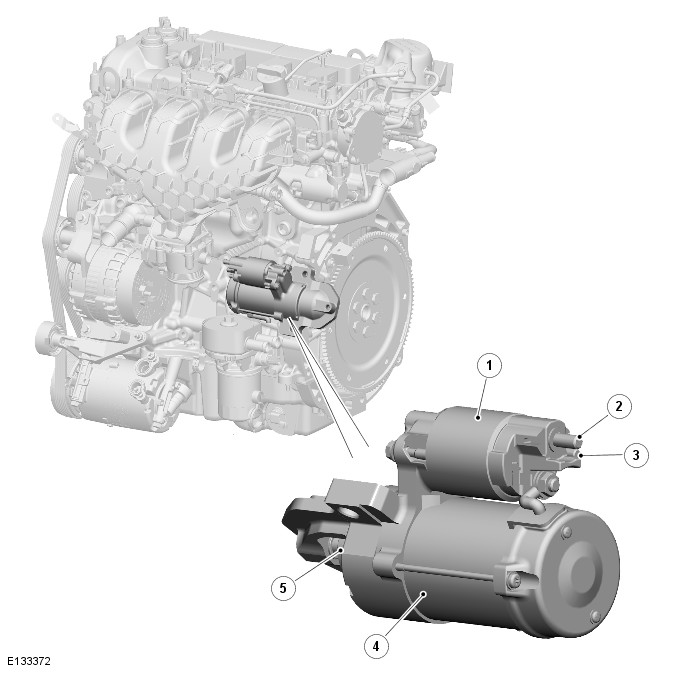
- Solenoid
- 12V supply from battery
- Solenoid power supply from Battery Junction Box (BJB)
- Starter motor
- Pinion gear
Starting System - Overview
OVERVIEW
The starter motor is rated as 1.3 kW and is a Denso conventional design with the motor and drive pinion in line and the solenoid mounted above. The starter motor is of the pre-engaged type and comprises a series wound motor, an overrunning clutch and an integral solenoid
Starting System - System Operation and Component Description
Control Diagram
NOTE: A = Hardwired
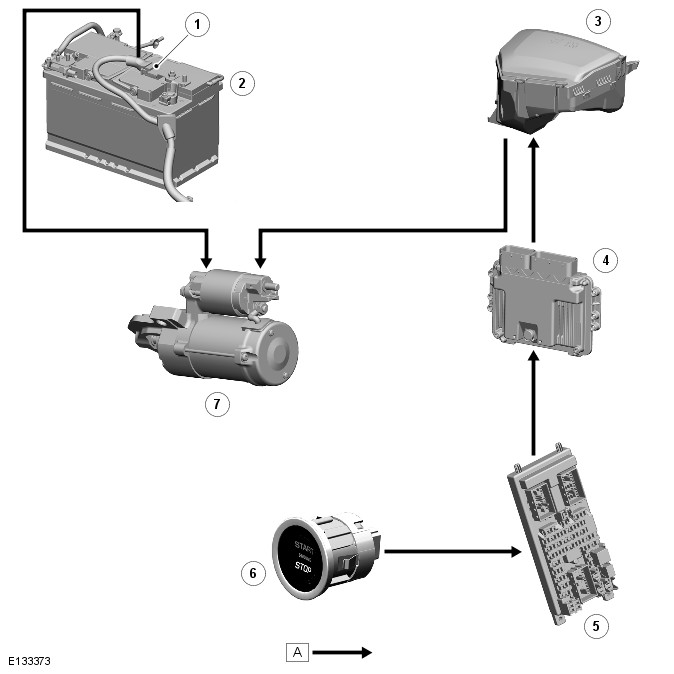
- Starter motor fuse
- Battery
- Battery Junction Box (BJB)
- Engine Control Module (ECM)
- Central Junction Box (CJB)
- Stop/start button
- Starter motor
System Operation
OPERATION
The starter solenoid is energised by the BJB (battery junction box) on receipt of a signal from the ECM (engine control module) when the ignition is in engine crank power mode 9. When engine cranking is requested, the ECM checks that a valid smart key code has been received before granting the crank request.
Component Description
DESCRIPTION
The starter motor is located on the rear LH (left-hand) side of the cylinder block and protrudes through an aperture to drive the flywheel via a ring gear. The motor is secured to the cylinder block by 2 bolts.
The power for starter operation is supplied on a substantial single cable connected direct from the battery positive terminal. Incorporated in the cable between the battery and the starter motor/generator is a CAL3 starter fuse. The fuse is mounted adjacent the battery positive terminal and is integral with the cable assembly. In the event of fuse failure, the complete cable assembly must be replaced. The cable is connected to the solenoid via a copper threaded stud and secured with a nut. The solenoid power cable from the BJB is located adjacent to the power cable and is also attached to the solenoid via a copper threaded stud and nut.
Starting System - GTDi 2.0L Petrol
Torque Specifications

Starter Motor
Removal
NOTES:
Some illustrations may show the engine removed for clarity.
Some variation in the illustrations may occur, but the essential information is always correct.
1. Disconnect the battery ground cable.
2. Refer to: Engine Cover - GTDi 2.0L Petrol (501-05 Interior Trim and Ornamentation, Removal and Installation).
3. Refer to: Air Cleaner (303-12B Intake Air Distribution and Filtering - GTDi 2.0L Petrol).
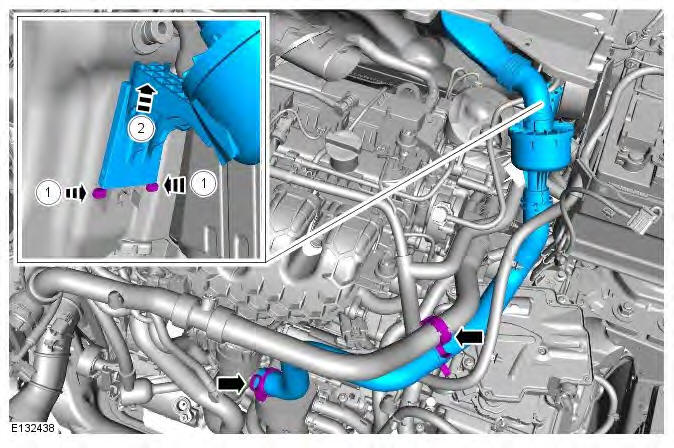
5.
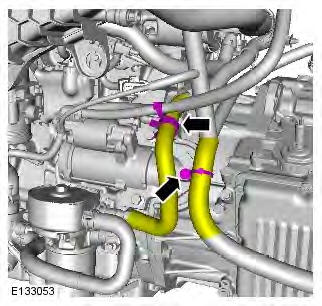
6.
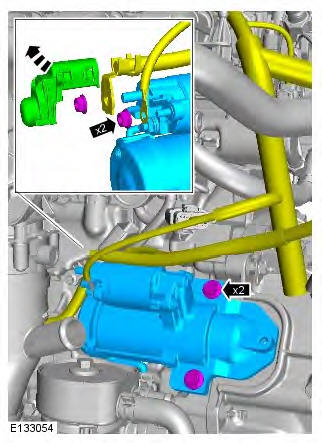
7. NOTE: Vehicles with stop/start.
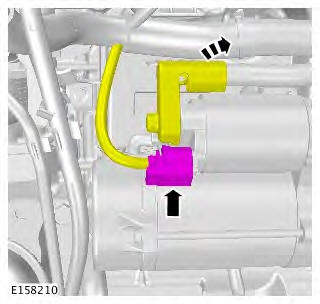
8. NOTE: Vehicles with stop/start.
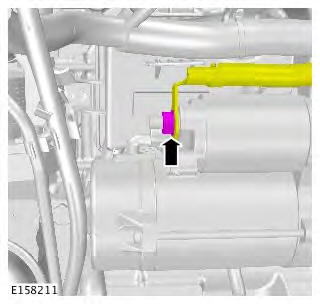
Installation
1. CAUTION: Make sure that the mating faces are clean and free of foreign material.
NOTES:
Make sure that the foam pad is correctly installed to the starter motor prior to installation. If the foam pad is damage, install a new foam pad.
Make sure that the foam pad is correctly installed to the starter motor prior to installation. If the foam pad is damage, install a new foam pad.
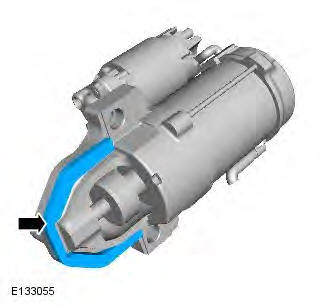
2.
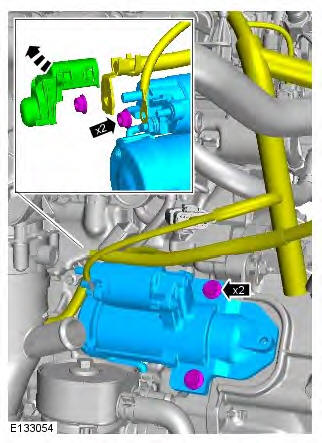
3. NOTE: Vehicles with stop/start. Torque: 10 Nm
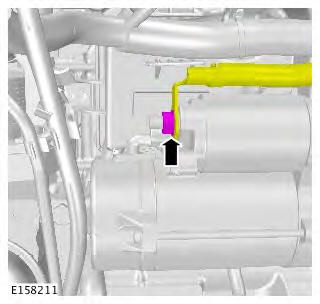
4. NOTE: Vehicles with stop/start.
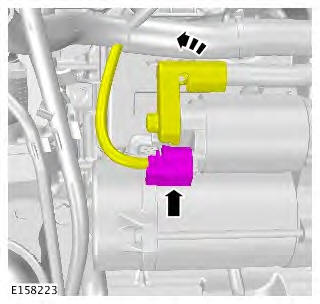
5.
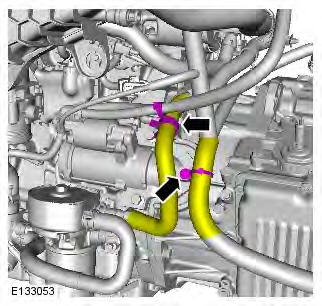
6.
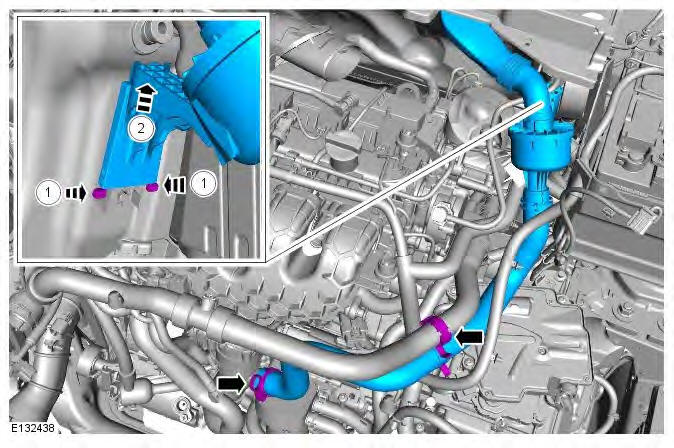
7. Refer to: Air Cleaner (303-12B Intake Air Distribution and Filtering - GTDi 2.0L Petrol).
8. Refer to: Engine Cover - GTDi 2.0L Petrol (501-05 Interior Trim and Ornamentation, Removal and Installation).
9. Connect the battery ground cable.
Starting System
Principles of Operation
For information on the operation of the system, refer to the relevant workshop manual section. REFER to: (303-06B Starting System - GTDi 2.0L Petrol)
Inspection and verification
CAUTION: Diagnosis by substitution from a donor vehicle is NOT acceptable. Substitution of control modules does not guarantee confirmation of a fault and may also cause additional faults in the vehicle being checked and/or the donor vehicle.
1. Verify the customer concern.
2. Visually inspect for obvious mechanical or electrical faults.
Visual inspection

3. If an obvious cause for an observed or reported concern is found, correct the cause (if possible) before proceeding to the next step.
4. Use the approved diagnostic system or a scan tool to retrieve any diagnostic trouble codes (DTCs) before moving onto the symptom chart or DTC index.
- Make sure that all DTCs are cleared following rectification.
5. Check DDW for open campaigns. Refer to the corresponding bulletins and SSM's which may be valid for the specific customer complaint and carry out the recommendations as needed.
Symptom chart
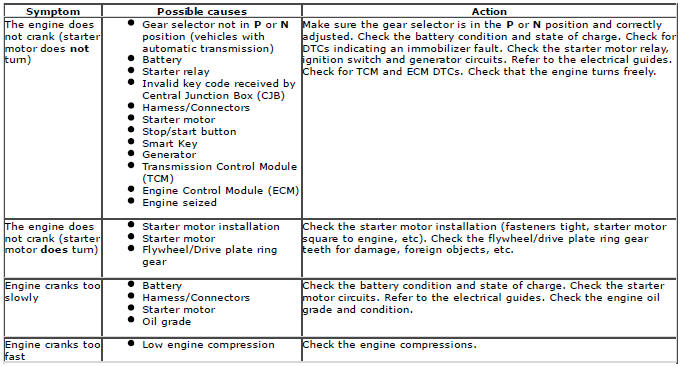

DTC index
For a complete list of all Diagnostic Trouble Codes (DTCs) that could be logged on this vehicle.

